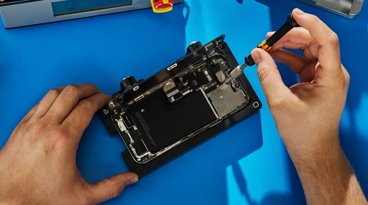Apple's future iPhones may leverage ARM's v7 Cortex designs
A recent job posting by Apple dug up by MacRumors seeks and iPhone developer with extensive knowledge of ARM's embedded processors, including their NEON vector unit.
As the rumor site points out, NEON is an extended instruction set similar to Intel's SSE or PowerPC's AltiVec which can accelerate multimedia applications. It's also said to be the marketing term for the most recent version of those extensions specifically for the ARMv7 Cortex processor, which is the successor to the ARMv6 chip currently employed in the second-generation of both the iPhone and iPod touch.
One theory behind Apple's apparent interest in NEON is that the extensions may help facilitate a number of multimedia-intensive operations due to start turning up in the iPhone this year, such as video recording, video processing, and rudimentary video editing.
Recently, the Wall Street Journal cited people familiar with Apple's ongoing efforts to develop its own embedded processors as saying those designs are unlikely to materialize until sometime next year. Still, mounting evidence suggest that this year's iPhone and iPod touch will sport a materially distinct architecture from their predecessors.
Given that Apple's latest job listing is dated this month and third-generation iPhones are already believed to be nearing production, it's possible the company's plan is to adopt Cortex chips based off ARM's reference designs this year, before making its own proprietary additions to those schematics for devices that will launch next year.
 Sam Oliver
Sam Oliver










 Andrew Orr
Andrew Orr
 Malcolm Owen
Malcolm Owen

 William Gallagher
William Gallagher

 Mike Wuerthele
Mike Wuerthele
 Christine McKee
Christine McKee








